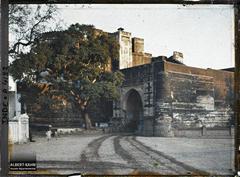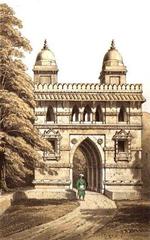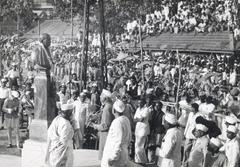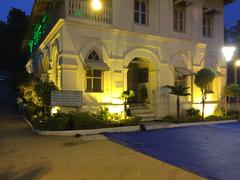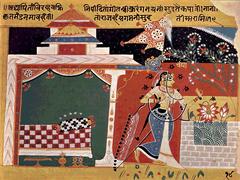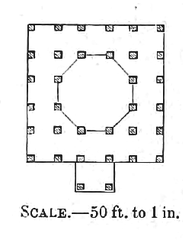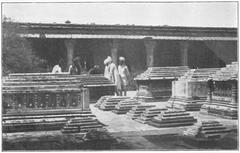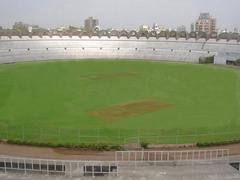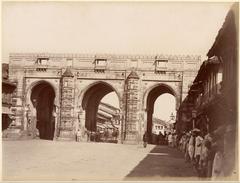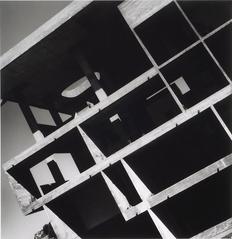Visiting Bai Harir Vav in Ahmedabad: A Complete Guide
Published Date: 18/07/2024
Introduction to Bai Harir Vav
Contents Overview
- Introduction to Bai Harir Vav
- Discover the History, Significance, and Visitor Information of Bai Harir Vav in Ahmedabad
- The Story Behind the Structure
- Architectural Significance
- Visitor Information
- Travel Tips
- Nearby Attractions
- A Legacy Etched in Stone
- FAQs
- Summary and Conclusion
- Sources and References
Discover the History, Significance, and Visitor Information of Bai Harir Vav in Ahmedabad
The Story Behind the Structure
Bai Harir Vav was commissioned in 1499 CE by Bai Harir, a revered lady of the court during the reign of Sultan Mahmud Begada. Bai Harir, also known as Anar Bai, held a significant position as the superintendent of the royal harem and was deeply respected for her wisdom and benevolence.
The stepwell was built as a charitable act, intended to provide water for the people of Ahmedabad, especially during times of scarcity. Its construction also served as a source of employment for over 1000 people, showcasing Bai Harir’s concern for the welfare of the community.
Architectural Significance
Bai Harir Vav is a remarkable example of Indo-Islamic architecture, seamlessly blending elements from both styles. The stepwell, descending five stories deep, is a testament to the advanced engineering and architectural skills of the time.
- Intricate Carvings: The stepwell is adorned with intricate carvings that are a visual treat. Delicate floral motifs, geometric patterns, and depictions of deities from Hindu mythology embellish the pillars, arches, and walls, showcasing the syncretic nature of art during that era.
- Strategic Design: The stepwell’s design is not just aesthetically pleasing but also highly functional. The descending levels provided access to the water table as it fluctuated throughout the year. The open-air design allowed for natural ventilation and light, keeping the air cool and fresh even during the scorching summer months.
- Religious Significance: While commissioned by a Muslim noblewoman, the stepwell features carvings of Hindu deities, reflecting the harmonious coexistence of different faiths in Ahmedabad at the time. This fusion of religious imagery highlights the inclusive nature of the city’s cultural fabric.
Visitor Information
- Visiting Hours: Bai Harir Vav is open to visitors from 8:00 AM to 6:00 PM daily. It is advisable to visit early in the morning or late in the afternoon to avoid the midday heat.
- Tickets: Entry to Bai Harir Vav is free, making it an accessible attraction for all.
- Guided Tours: Guided tours are available and highly recommended to gain a deeper understanding of the historical and architectural significance of the site.
Travel Tips
- Best Time to Visit: The best time to visit is during the cooler months from October to March. This will ensure a comfortable exploration of the stepwell.
- Photography Spots: The intricate carvings and the play of light and shadow within the stepwell offer excellent photographic opportunities. Don’t forget to bring a good camera to capture the beauty of this monument.
- Accessibility: The stepwell involves descending several flights of stairs, which may be challenging for visitors with mobility issues.
Nearby Attractions
- Adalaj Stepwell: Another architectural marvel located nearby, Adalaj Stepwell is worth a visit for its intricate carvings and historical significance.
- Sarkhej Roza: A beautiful complex of tombs and mosques, Sarkhej Roza is a short drive away and offers a glimpse into the region’s Islamic architecture.
- Sabarmati Ashram: The former residence of Mahatma Gandhi, Sabarmati Ashram is a place of great historical importance and a must-visit for history enthusiasts.
A Legacy Etched in Stone
Bai Harir Vav, over the centuries, has served as more than just a water source. It became a social hub, a place for people to gather, interact, and find respite from the heat. The cool, shaded interiors provided a welcome escape from the bustling city life, fostering a sense of community.
Today, Bai Harir Vav stands as a protected monument, recognized for its historical and architectural significance. It serves as a window into Ahmedabad’s glorious past, reminding us of the city’s rich cultural tapestry and the legacy of Bai Harir, a woman who left an indelible mark on the city’s history through her compassion and vision.
FAQs
Q: What are the visiting hours for Bai Harir Vav? A: Bai Harir Vav is open from 8:00 AM to 6:00 PM daily.
Q: Is there an entry fee for Bai Harir Vav? A: No, entry to Bai Harir Vav is free.
Q: Are guided tours available? A: Yes, guided tours are available and recommended for a comprehensive understanding of the site.
Q: What is the best time to visit Bai Harir Vav? A: The best time to visit is between October and March when the weather is cooler.
Q: Are there any nearby attractions to visit? A: Yes, nearby attractions include Adalaj Stepwell, Sarkhej Roza, and Sabarmati Ashram.


